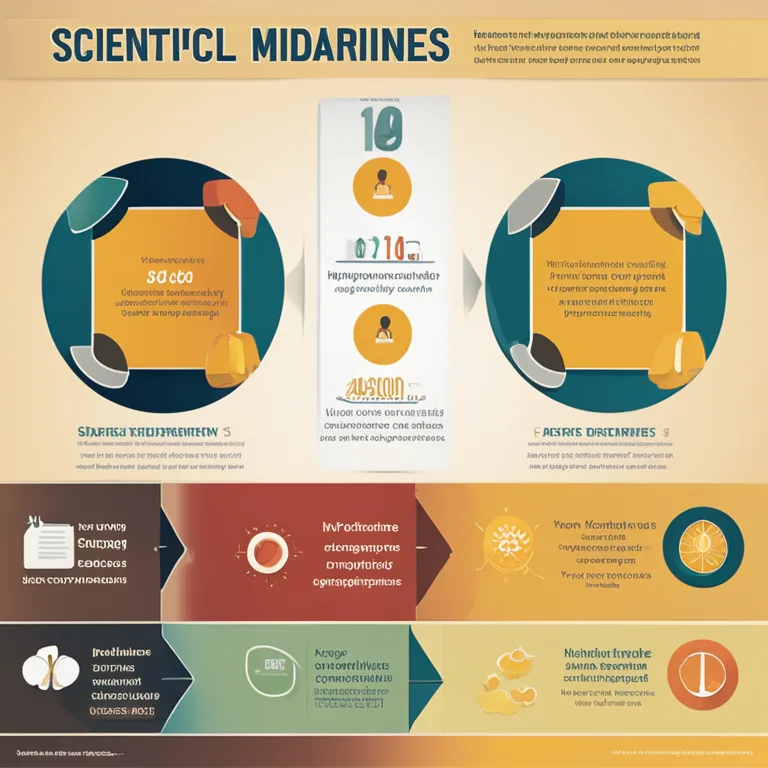
Easing Migraines with Mindfulness Meditation
Discover the relief that mindfulness meditation can offer for migraine sufferers in this comprehensive guide.
article by Hina Kurosawa
Migraine Relief Through Mindfulness
Migraines are not just headaches; they are complex neurological events that can cause severe pain, nausea, and sensitivity to light and sound. For many sufferers, traditional treatments may fall short or come with unwanted side-effects. In recent years, mindfulness meditation has surfaced as a holistic complement to conventional care, helping to alleviate the intensity and frequency of migraines. By focusing on the present moment and cultivating a state of non-judgmental awareness, practitioners can influence their pain experience and initiate a calming response in their bodies.

The Mind-Body Connection in Pain Management
The mind-body connection plays a pivotal role in how we experience pain. Mindfulness meditation strengthens this connection through techniques that promote relaxation and stress reduction. Stress is a known trigger for migraines, and by mitigating stress responses, mindfulness can directly impact one's susceptibility to migraine attacks. Engaging in daily meditation has been shown to reduce stress hormone levels, thus potentially decreasing the frequency of migraine episodes.

Implementing Mindfulness into Your Routine
Incorporating mindfulness meditation into your daily life does not require extensive training or time. It can be as simple as dedicating a few minutes each day to sit quietly, breathe deeply, and observe your thoughts and sensations without judgment. Guided meditations, available through apps or online resources, can provide structure for beginners. Consistency is key; even short, daily sessions of mindfulness can have a cumulative effect on migraine management.

Scientific Evidence Supporting Mindfulness for Migraines
Several studies have lent empirical support to the efficacy of mindfulness for migraines. Research indicates that those who engage in regular mindfulness practices report a reduction in migraine severity and duration. They also experience improved sleep quality and reduced anxiety, both of which can be significant contributors to migraine occurrences. The neuroplasticity of the brain allows it to adapt and change with mindfulness training, potentially reducing pain sensitivity over time.

Getting the Most Out of Mindfulness Practices
To get the most out of mindfulness for migraine relief, consistency in practice is more important than the length of each session. Mindfulness exercises can be tailored to individual needs, varying from focused breathing to body scanning or mindful walking. Some may find integrating mindfulness with gentle yoga or tai chi enhances the benefits. Also, attending mindfulness workshops or retreats can provide deeper insights into the practice.
Navigating Setbacks with Mindful Resilience
It's important to approach mindfulness with patience and to understand that progress may be gradual. Migraine sufferers should not become discouraged if immediate results are not evident. With mindfulness, the goal is to build resilience and a more harmonious relation to pain. Over time, mindfulness can help alter one’s approach to migraines, moving from a place of struggle to one of acceptance and ease.
Published: 1/8/2024
Modified: 1/8/2024
More predictions
Come back here soon to learn more about yourself and your future


The Harmony of Mindful Breathing in Meditation
Delve into the symbiotic relationship between meditation, mindfulness, and breathwork to achieve inner peace and clarity.


Mindfulness Meditation Benefits for High Schoolers
Discover how mindfulness meditation can help high school students navigate academic pressure, enhance focus, and improve overall wellbeing.


Harmonize Your Spirit: Energy Meditation Techniques
Discover the serene world of energy meditation to harmonize the spirit, balance the chakras, and foster inner peace in our modern lives.